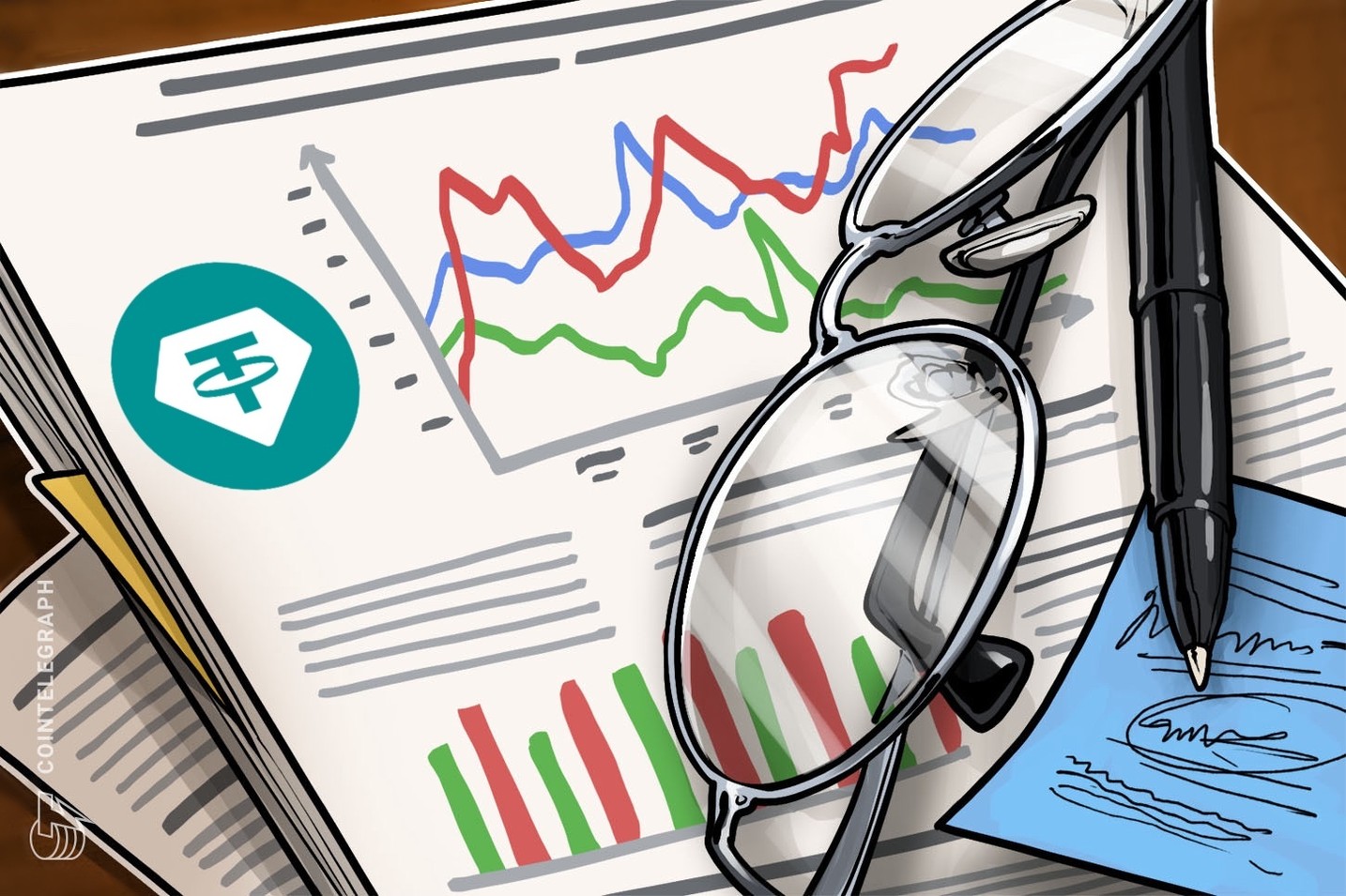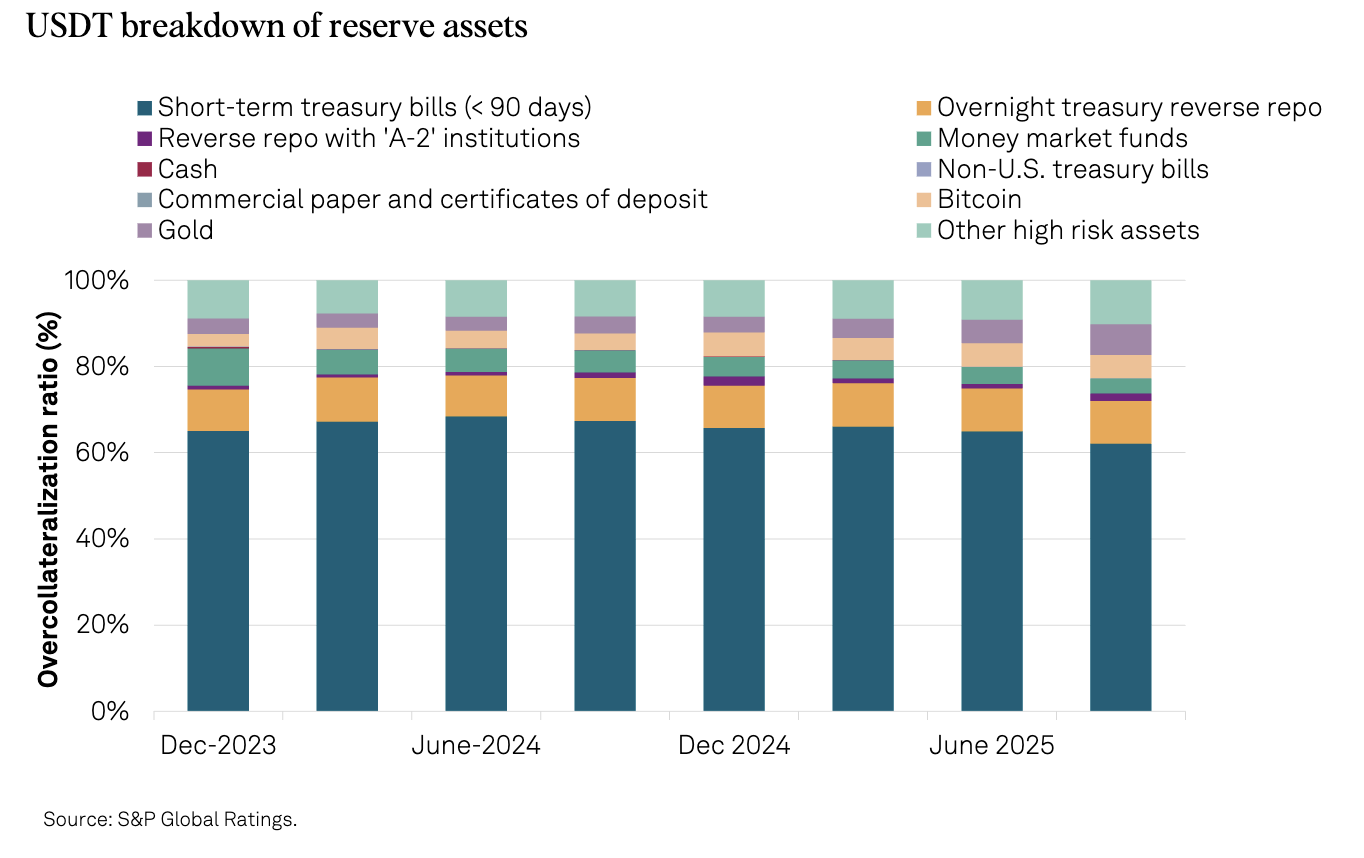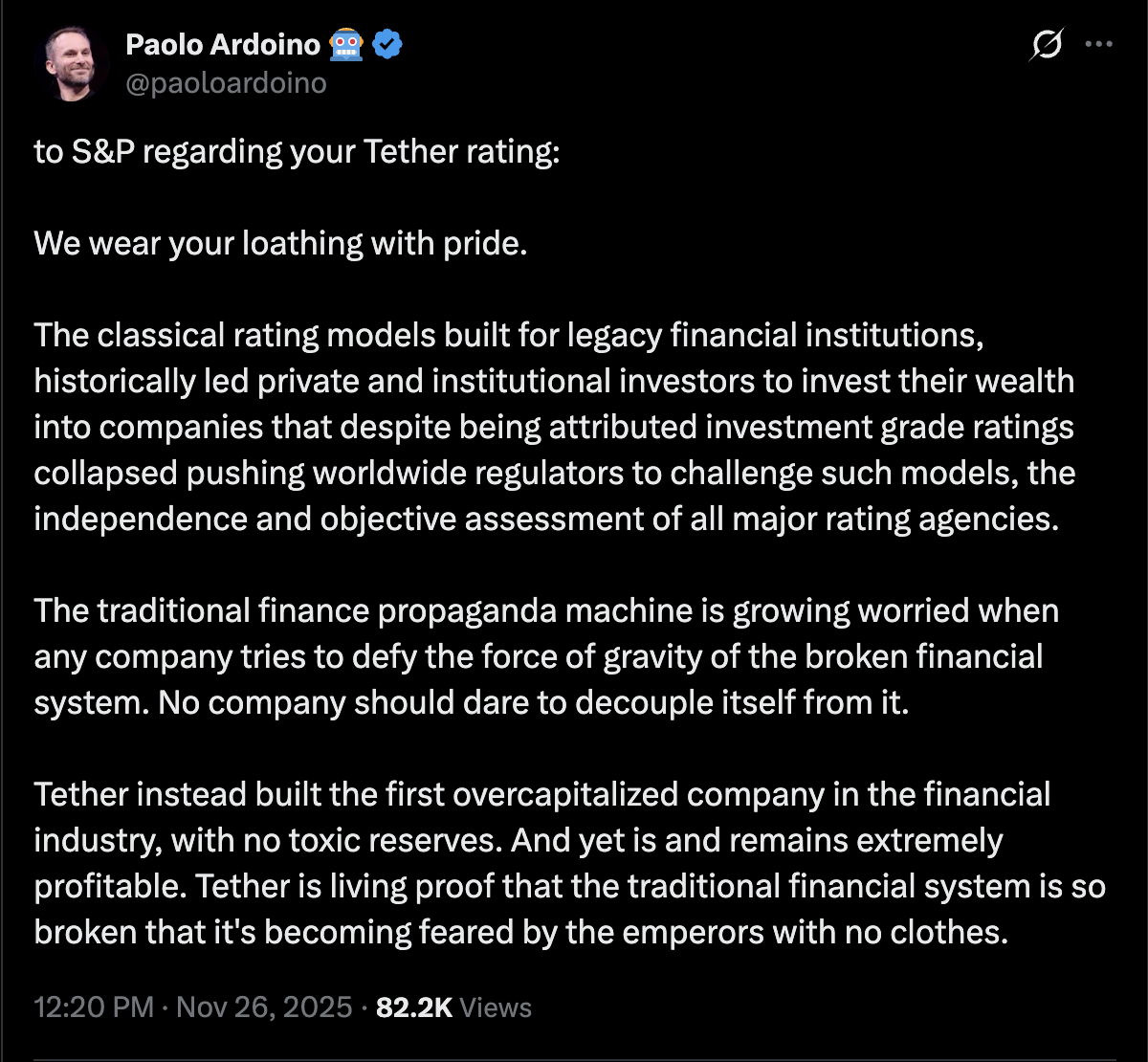
S&P Global Ratings has lowered Tether’s USDt rating to the lowest point on its stablecoin stability scale, prompting uncertainty regarding its dollar peg capability. Tether has responded by labeling the report as “misleading.”
The weak assessment arises from multiple factors, including that Tether supports USDt with higher-risk assets like Bitcoin, gold, loans, and corporate bonds. The report stated:
“Bitcoin represents 5.6% of USDT in circulation, exceeding the 3.9% overcollateralization margin associated with a collateralization ratio of 103.9%. A decline in the price of bitcoin or the value of other higher-risk assets could therefore reduce collateral coverage.”
 A breakdown of the reserve assets backing the USDt stablecoin.
Source: S&P Global Ratings
A breakdown of the reserve assets backing the USDt stablecoin.
Source: S&P Global Ratings
Tether’s headquarters is in El Salvador and is regulated by the National Commission of Digital Assets (CNAD), which has more relaxed rules regarding reserve asset backing for stablecoins, according to S&P. A significant lack of adequate audits or proof-of-reserve reports was also noted as a key factor contributing to the unstable rating. However, S&P acknowledged that 75% of USDt’s backing is comprised of U.S. Treasuries and other low-risk, short-term financial instruments.
In response to the report, Tether labeled it as “misleading,” maintaining that they “strongly disagree with its characterization,” and asserting that it doesn’t adequately reflect the nature, scale, and macroeconomic significance of digitally native money, overlooking evidence that shows USDT’s durability, transparency, and global utility.
CEO Paolo Ardoino countered the recent evaluation, critiquing the valuation methods of financial rating agencies, stating:
“The classical rating models built for legacy financial institutions historically led private and institutional investors to invest their wealth into companies that, despite being attributed investment grade ratings, collapsed.”
 Source
Source: Paolo Ardoino
Source
Source: Paolo Ardoino
This report emerges during a pivotal year for stablecoins, following the introduction of regulations in the U.S. and a growing emphasis by the Trump administration on utilizing stablecoins to maintain U.S. dollar dominance. Additionally, the stablecoin market has surged past a $300 billion market cap.
Tether is currently among the top holders of U.S. Treasuries globally, amassing over $112 billion in short-term U.S. government securities, exceeding holdings of countries such as South Korea and Germany. Tether has also collected 116 tons of gold as part of its reserves, positioning itself similarly to a central bank.
For more insights, view the Magazine article covering related risks.


